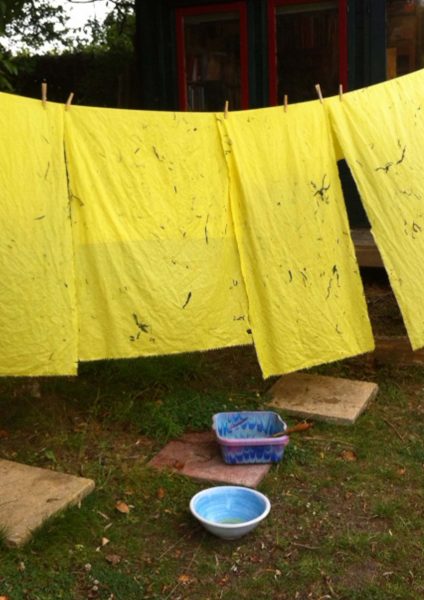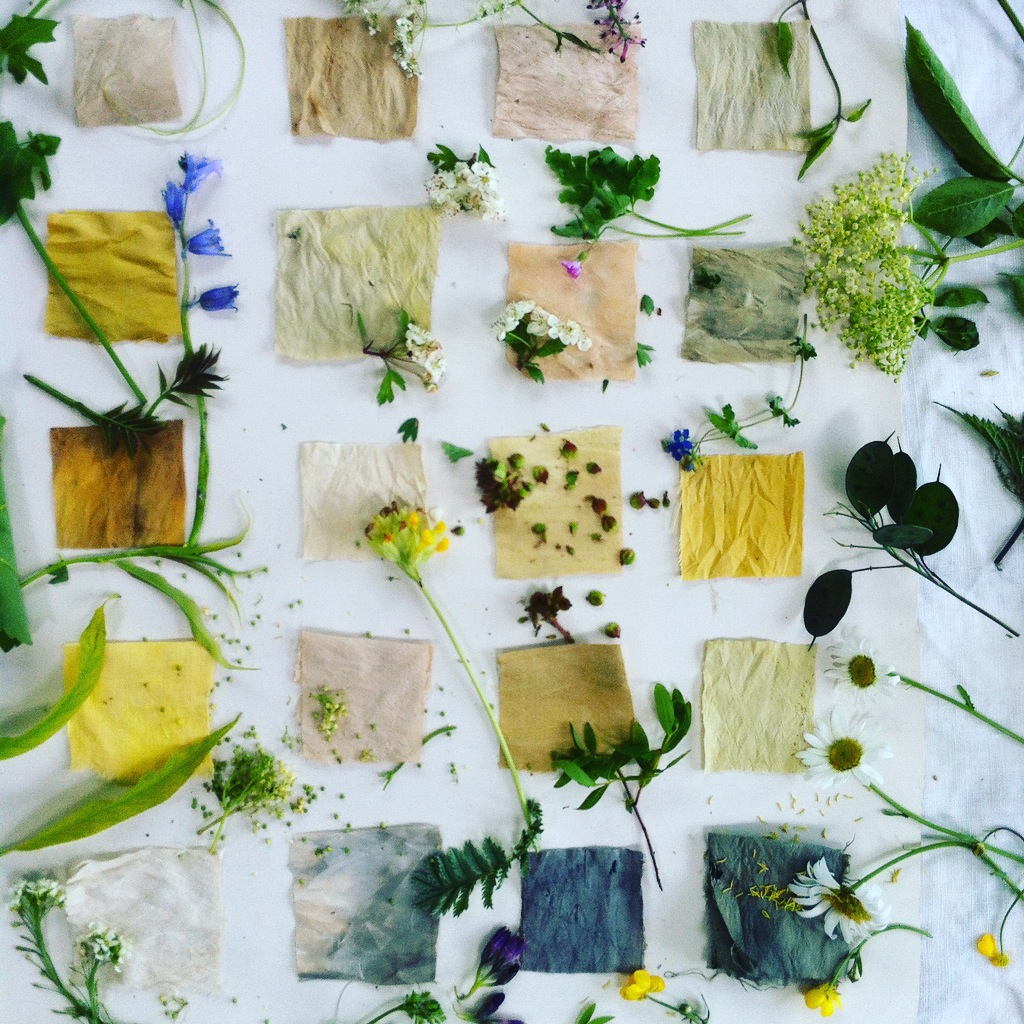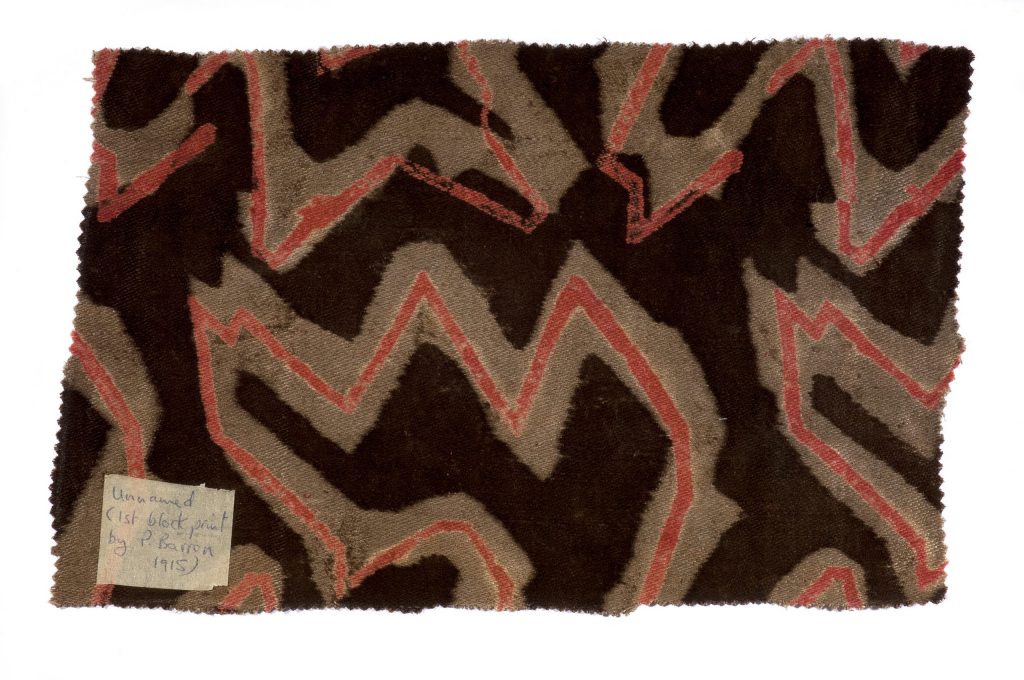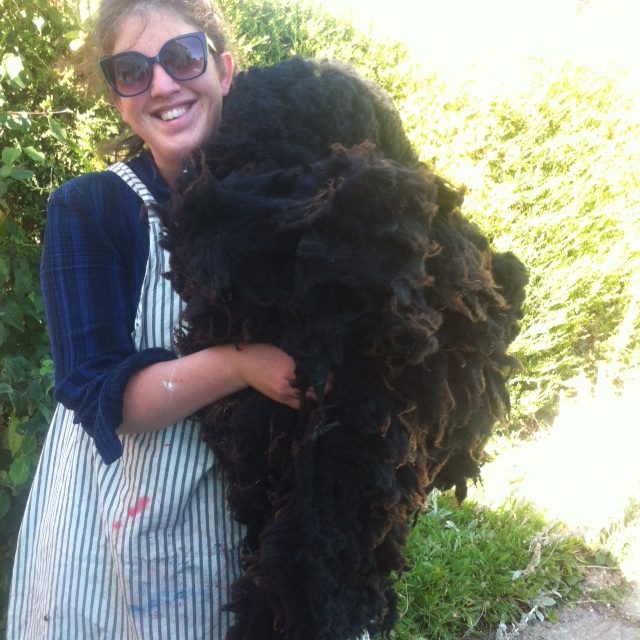Slow Beauty

I’ve always been a bit of a hippie – I worked for the new economics foundation for many years where our slogan was ‘economics as if people and the planet matters’ so I’ve always been interested in alternative ways of doing things and making the radical alternative not only possible but real.
When I left Chelsea College of Art 5 years ago I got a job as a hand printer at the wonderful Ivo’s screen printing factory in Southall. The printers who work there are rare and wonderful master craftsmen capable of printing 25 colour chinzes but there is an incredible amount of waste and pollution involved in the process. And Ivo’s is only small – the textile industry as a whole is responsible for more greenhouse gases than air travel & maritime shipping put together. That’s why Extinction Rebellion has been campaigning at London Fashion Week and why I decided that when I came to set up my own workshop in Sussex I would try to clean up my act and develop my work using natural dyes and use organic fabrics where ever possible.

Thanks to lovely Jaine McCormack and the team at Guy Goodfellow in Chelsea, I was able to launch my naturally dyed collection at their Showroom 2 years ago. Since then I’ve been on a really steep learning curve – educating myself as well as my clients as we gradually explored the idea of seasonality, reusing valuable fabric where appropriate (I remember one interior designer’s shock when I suggested that we re-dye her curtains!) and the notion that using natural materials means that nothing can be reproduced exactly the same – instead variation and difference should be embraced and celebrated.
Then I came to research my book into the wonderful 1930’s block printers Phyllis Barron and Dorothy Larcher. I spent a whole winter transcribing Phyllis Barron’s talk – ‘My life as a Block Printer’ which she gave in 1962 at Dartington, nearly 30 years after she closed her workshop down and stopped printing altogether. Her talk shares in detail the trials and tribulations of a life times obsession with a few simple dyeing and printing processes which she had to pioneer herself – not unlike William Morris. Indigo, cutch and iron were her materials and although she left no technical notes – her commitment over decades to perfecting these difficult processes inspired me to deepen my practical research – a journey I’m still very much at the beginning of.
I’m now really into the natural colour palette and relish the sensuality and seasonality of the whole process. It’s been wonderful to work alongside Alice Garner and form the Steyning Imprint together – making things together and teaching others. Her interest and knowledge in the natural world plus her creativity and attention to detail makes her fab partner to work with. Having a flock of sheep really helps when it comes to providing the wool filling for our South Downs cushions.
Together we’ve come up with a few ways to make what we do as sustainable as possible. Alice is making beautiful sketch books using recycled coffee cups and we are trying to source more organic hemp – woven small scale to print our vegetable dyes on. Thanks to Alice’s sheep plus some neighbouring farmers who have been very generous we are now in the process of producing South Downs wool cushion pads. We’re trying to really cut down on waste – all spare scraps of fabric are used to overprint labels on or sew into lavender bags. By thinking about our supply chain and how we can make a positive difference we are also reaching out to others who share the same values and vision – it’s been really empowering to discover how many like-minded people are out there and to start supporting each other.
It’s just a beginning and only a drop in the ocean but it makes me want to keep making – not just so there is more stuff for people to buy – but because the way we’re doing things is helping to pioneer a different way of living and working. It keeps me feeling positive and feeling excited – we’ll be at the Downland and Weald Christmas Fair from the 23rd – 26th November & would love it if you came and said hello or do please get in touch if you are doing something similar – we would love to hear from you.






